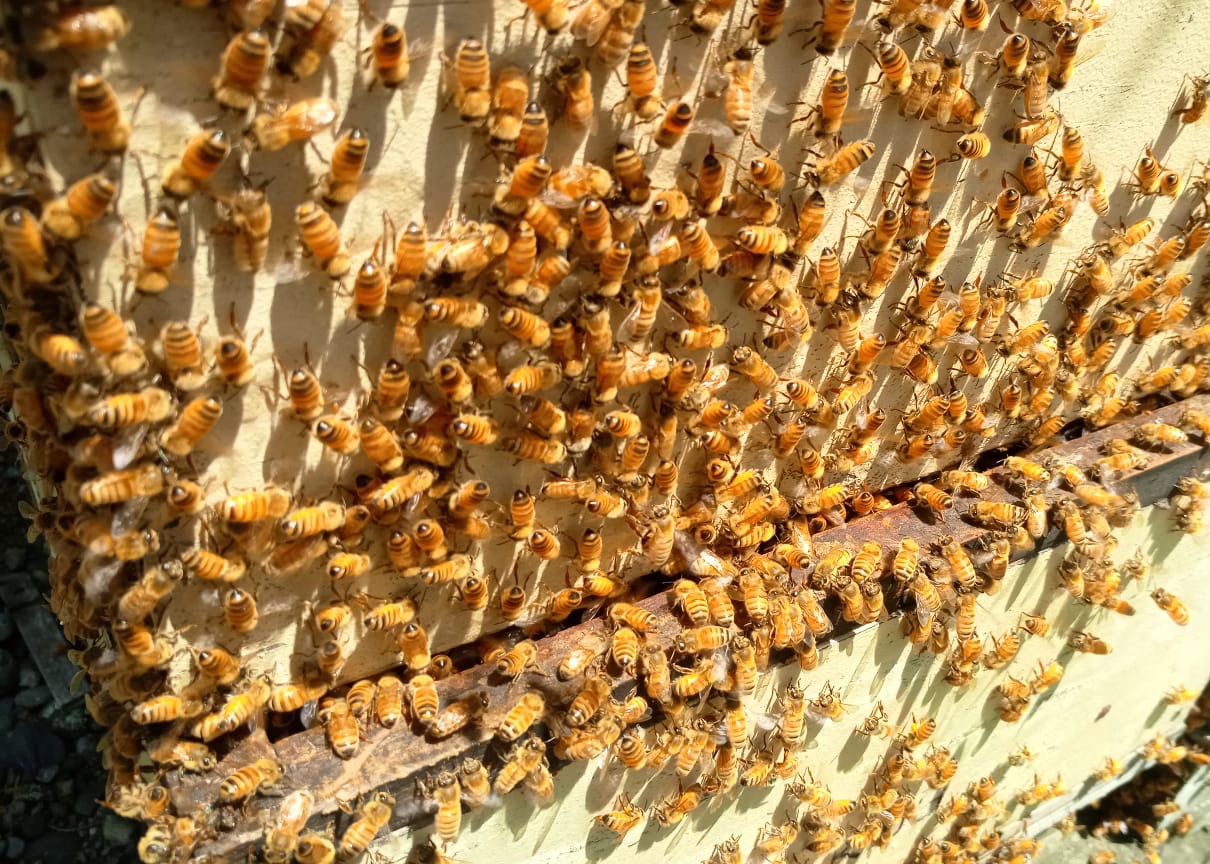
Harvesting Manuka Honey in New Zealand
Our apprentice beekeeper Jack continues his exploration of the Kiwi hills to deepen his knowledge of beekeeping, and gain invaluable experience with our dear friend Alex at Manuka Island Honey. As part of his 3 year apprenticeship, supported by QEST, he has travelled to the other side of the globe with the intention of getting an insight into the beekeeping practises of the Manuka honey veterans in this stunningly biodiverse part of the world.

Deep in the forested valleys of the Wairou are the apiaries situated to take advantage of the Mānuka nectar flow. Criss-crossed by rivers and fjords, the bees are guided by the topography, sheltered, and coralled over the forests. As the Mānuka plant favours wet soil, we greeted the arrival of heavy rains gratefully. Summer heat and humidity to follow would bring on the blossom, and keep the nectaries full. Long did the rain fall however, with the mighty Buller river at home so swollen by its staggering tributary system it swept away shipping containers, roads, and even bridges. Some of these tributaries are essential for access to apiaries and even without rain must be forwarded carefully. With the rain, however, rivers became raging torrents and changed course sweeping away our fjording sites in turn. The wisdom of preemptively stacking honey boxes became apparent.

It was weeks before we could regain access and by this time the valleys had turned white. Mānuka trees yield abundant small five-petalled flowers, within which a red centre ringed by pollen-carrying stamen guides hungry bees to forage. With just a few weeks of bloom it would seem such a season couldn't possibly yield a thousand honey boxes in just three days but my worn finger tips say otherwise. Temperatures at the valley floor rise first; the roadside borders begin to turn white whilst the valley walls are still lush and green. As summer progresses so these walls slowly follow suit, all the while the bees adjust their foraging patterns and ascend with the blossom. In this way the Mānuka season is extended and the rich bounty on offer harvested.

Nic and Jack from LHC, with Alex and Alysha of Manuka Island Honey Farms
Cracking apart honey boxes with his specially designed tool, Alex points to the burr comb atop frames of honey, a sure sign the nectar flow has been strong. Alex's comment "This is the real McKoy" is my invitation to boost energy levels with a piece of still-warm-from-the-hive comb honey. The flavour is delicious.

Golden, orange-tinged honey, Manuka is akin to our prized British Heather Honey with its thixotropic or jelly-like consistency. Sweet, lightly tangy and with a subtle bitterness reminiscent of Seville oranges, I'm told it's common as I experience a gentle tingling on my tongue, on account of Mānuka's special properties. Methylglyoxal, or MGO, is the Mānuka factor that was discovered in 90's to possess unique antibacterial activities, and it was this naturally occurring compound that launched Mānuka to its highly coveted status. The MGO number on a jar gives a measure of the content of Methylglyoxal in milligrams per kilo, and offers an indicator of its activity, to say nothing of its myriad other potential health benefits.

With just weeks of my own beekeeping activities left, my time in New Zealand with Manuka Island Honey has been a pleasure. I'm not only fitter, but working here has been a real boon to my experience as an apprentice bee farmer at the London Honey Company. Having never before tasted Mānuka honey, I can say its worth the tremendous effort put into obtaining it; it's simply delightful. There are plenty of twelve-hour working days left however, and the next round of cropping is soon to start. When I get there, it's for my colleagues back home in London to decide whether my accent has taken on a twang like that of the honey.

